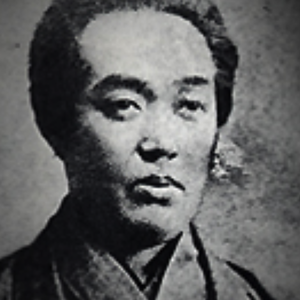YOSHITOSHI
COLLECTING JAPANESE PRINTS FEATURED MEIJI ARTISTTaiso Yoshitoshi
1839 - 1892
Profile at a Glance:
Meiji period artist that specialized in both woodblock prints and paintings
Highly imaginative style that combined political content and social commentary, often with graphic scenes of violence
Designs often utilized historical, religious, and folk figures polemical commentary
Most known for his series of 36 Ghosts designs and 100 Aspects of the Moon
One of the last remaining masters of the ukiyo-e genre, Taiso Yoshitoshi was born Kinzaburo Yonejiro on April 30, 1839. At age eleven, Taiso became a student of ukiyo-e master Kuniyoshi Utagawa, eventually changing his name to Tsukiyoka Yoshitoshi. In 1853, he produced his first woodblock prints depicting the naval battle Dan-no-Ura.
After the passing of Kuniyoshi in 1861, Taiso spent the next several years struggling to support himself. The arrival of Commodore Perry and gunboat diplomacy had thrown Japan into a state of political shock and economic recession. Furthermore, escalating tensions between the Shogunate and Imperial Court culminated in the Boshin War, which Taiso witnessed firsthand. Seizing on the opportunity, he produced a series of prints depicting the chaos and carnage of the battlefield. Although such sanguinary motifs were popular in woodblock art, a sharp decline in commissions resulted in bitter poverty.
By the early 1870s, Taiso was suffering from severe depression and did not produce any prints for two years. He recovered in 1873 and, for the next five years, continued to work with unyielding determination. It was at this time he began using the artist name Taiso. In the wake of the Satsuma Rebellion in 1877, public demand for prints brought Taiso great commercial success.
Throughout the 1880s, Taiso married, established a flourishing art school and gained employment with a prominent newspaper. He continued to work prolifically, producing series such as One Hundred Aspects of the Moon (date unknown), Thirty-Two Aspects of Customs and Manners (1888), and New Form of Thirty-Six Ghosts (1889). Taiso continued to work and teach until his death on June 9, 1892, from a cerebral hemorrhage at the age of fifty-three. Throughout a tumultuous life and career, Taiso cleaved tradition in his choice of subjects, drawing upon literature, history, mythology, and samurai to celebrate Japanese culture before the advent of Westernization in the Meiji era.





